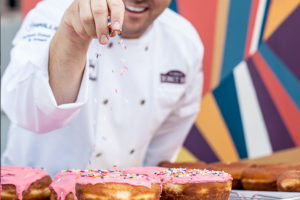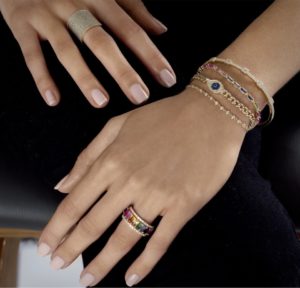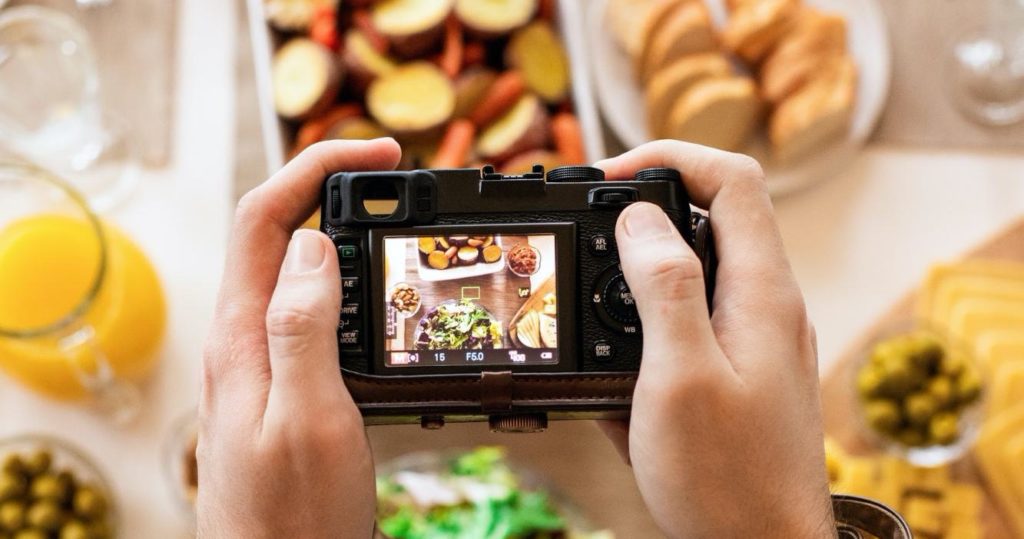
They say people first eat with their eyes. Having delicious-looking images of your product is essential for landing pages, product pages, and advertisements. Food photographers can breathe life into your online presence but take time and are costly.
Why create your own imagery? Here are the benefits of DIY content:
- Increased perceived credibility and authenticity: The current advertising trend of using a handheld phone makes creatives feel more personal. It’s as though the content is coming from a good friend or a trusted influencer. Your ad creative can walk customers through the unboxing process or food prep process in an inviting format.
- Flexibility and timing: You can capitalize on a trend or test a new idea without waiting weeks to book and host a photo/video shoot and then edit all the shots. Simply snap a few shots in your home or office and start testing!
- Make the most of what you have: Chances are, you haven’t fully milked all the value out of your existing product imagery. With some editing and repurposing skills, you can make new content in a flash!
- Cost: You can’t beat the cost of making something for FREE at home.
Whatever the motive, making High-quality food imagery from home is an inexpensive and effective option. Here’s 3 ways to make your own content.
1. Use your phone!
We’re in an incredible age where almost everyone has a high-quality camera in their back pocket. Whether iPhone or Android, virtually all mid to high-end phones can produce the 1000 x 1000 pixel images that are necessary for use in online marketing. Some examples from our client, OneBy:
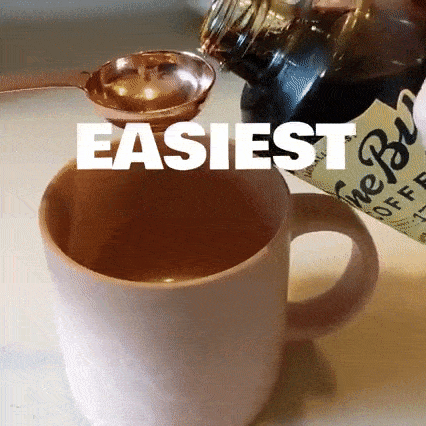

Here are some tips for tantalizing food content:
Motion – Motion is essential for capturing people’s attention. Capturing the action of pouring, melting, spreading, or pulling apart food makes the viewer imagine eating your product. These visuals are really easy to capture because the focus is on the action instead of a perfectly crafted single frame.
Point of view – Make your viewer feel like they are already interacting with and eating your food. First-person imagery can lead to more than a 40% increase in engagement as opposed to third-person imagery. The results were so significant that we published an article about it.
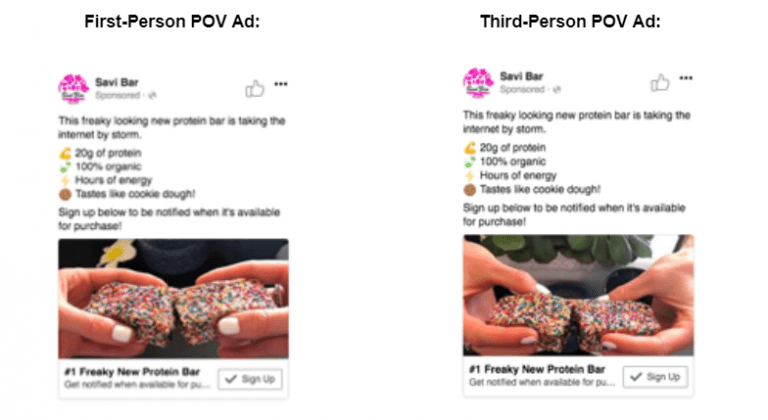
Lighting: Lighting is critical for all photos and videos, but especially for food! Avoid contrasting shadows, yellow lighting, or dark rooms. Shoot in a bright space and consider adding lights through a clip-on phone light. Flashes usually produce poor results, especially in food photography. Make sure the light is warm and soft while still being bright for the best results.
2. Use stock images (the right way!)
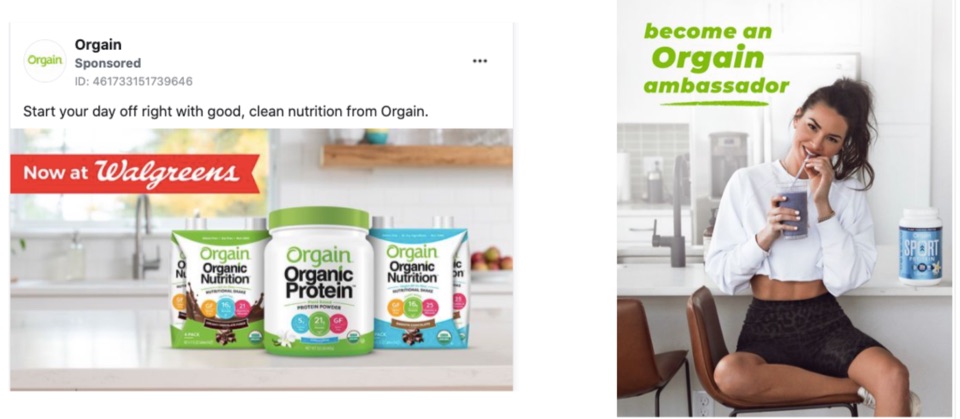
Stock photos can be a lifesaver when your business needs professional-looking visuals in a pinch. They are professionally shot, come at a low cost or even free, and there’s a wide variety of themes to fit a wide variety of situations.
So should you use stock images in your Facebook ad creatives? It depends. Here are some circumstances when using a stock image is effective:
Lifestyle images – Stock images are especially great when you need images of people. Whether you’re targeting pilates moms, powerlifters, or college students, you can find visually interesting images that appeal to that lifestyle.
Backgrounds – If you have some editing skills, you can get even more out-of-stock images! You can find flat lays, desks, kitchens, countertops, and other images that are built to be backgrounds for your product.
Warning: Stock images are generic by design. An unedited stock image won’t communicate what your brand is selling. Here are the two rules to using stock images in your marketing:
Customize them! – Your brand should be front and center in every ad you create. Add your logo, your brand colors, or PNGs of your product or its packaging to make the advertisement distinctly yours.
Avoid false representation – Food photography makes up a large segment of stock imagery. It can be tempting to pass off some of these images as your own product if they look similar enough. This is a bad idea. People tend to be highly selective about the food they eat, and if your brand ends up caught passing stock images off as pictures of your product, then you break trust with the customer.
3. Repurpose what you have!

Product images – Try using your product imagery on different backgrounds and in different groupings. It will look like different photoshoots!
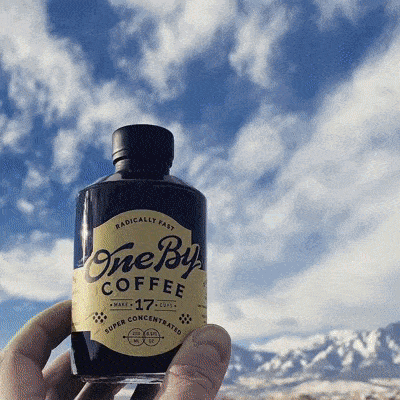
User-generated content – Are your customers taking awesome photos? These make great marketing content (with their permission, of course). Customers love to see what other customers’ experience is with your food.
Food is one of the most fun product categories to create content for! No matter how you are producing your content, always remember to enjoy the process 🙂

